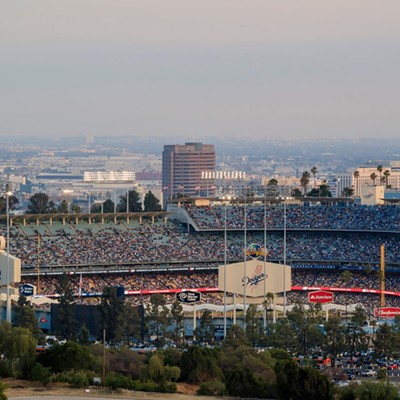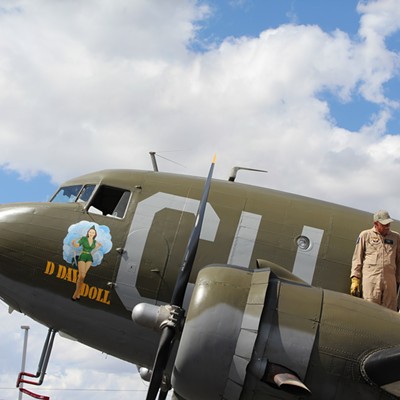It's next-to-last on a list of 73 men who were marched into the streets of the Sonoran town of San Pedro de la Cueva on Dec. 2, 1915, and gunned down in a hail of bullets that lasted for several minutes. That would be the name of Francisco N. Ibarra, great-great-grandfather of my children, Darlene and Alexander Danehy.
No one is quite sure what prompted Pancho Villa to order the slaughter of these 73 men (along with, as the report says, six Chinese and five "foreigners"). Having studied the thug, I'm guessing Villa had gone a few days without raping a 14-year-old girl and was feeling kinda surly.
Historical reports vary, but most agree that Villa was in the middle of his so-called Sonoran campaign--which amounted to little more than thievery, pillaging and mass rape--when he came upon the town of San Pedro de la Cueva. Villa, apparently upset that his sow's-ear self wasn't being received like a silk purse, rode into town the next day and ordered all the men in the town to assemble.
The local priest, a Padre Flores, pleaded with Villa to spare lives, to no avail. For his efforts, Padre Flores, who was on his knees--clinging to Villa's legs and begging for mercy--was shot through the head by Villa himself. Then the rest were slaughtered.
I have no doubt that there will be people out there who will cling to the notion that Villa was some kind of misunderstood revolutionary/patriot. That's OK; some people have elevated Che Guevara to sainthood, too. I also understand that one man's terrorist is another man's freedom fighter. Menachem Begin and Yasser Arafat both won the Nobel Peace Prize, for crying out loud. But it's awful hard to put a pretty face on Pancho Villa.
There was the time that Villa, apparently angry that the United States had recognized the Carranza government in Mexico, took control of a train in Santa Isabel, Chihuahua. Seventeen employees of the ASARCO mining company--all American citizens--were taken from the train, forced to strip naked, and then executed.
The United States' response to that was basically nonexistent, so Villa decided to get his neighbor's attention. He first laid siege to Agua Prieta, Sonora, which sits directly across the border from Douglas. Villa's men camped out on Cerro Gallardo, a small hill a few hundred yards south of "D" Hill in Douglas, the spot where, every year, Douglas High School freshmen whitewash the giant "D" that can be seen for miles.
After Agua Prieta, Villa moved on and attacked another border town, only this one was on this side of the border. On March 9, 1916, Villa's gang entered Columbus, N.M. A running gun battle ensued over the next several hours; rapes were committed; and 18 Americans were killed (10 civilians and eight soldiers).
That finally got Woodrow Wilson going, and the United States sent an expeditionary force under "Black Jack" Pershing into Mexico to hunt down Villa. (Oddly enough, a photo exists of Pershing, Villa and Mexican Gen. Álvaro Obregón, taken at Fort Bliss, Texas, in 1913.) Pershing never found him, and the United States would soon turn its attention to World War I.
Villa was eventually killed in 1923 as paid assassins poured 150 bullets into his sorry carcass. Today, some in Mexico see him as a hero who fought for the poor. It's easy for people to get confused. Ronald Reagan once called the remnants of Anastasio Somoza's thug army in Nicaragua "the moral equivalent of our Founding Fathers."
I'll make it simple: Ignore everything he did in Mexico--all the butchery, the rapes, the gross inhumanity--but he attacked the United States and killed Americans! That should be the end of the discussion. There shouldn't be a statue of him in this country, as there is in downtown Tucson. Is there a statue of Winfield Scott in Mexico City? Of Robert E. Lee in Veracruz? No, and nor should there be.
The United States usually doesn't take so kindly to invaders. Japan's Admiral Isoroku Yamamoto planned and then carried out the attack on Pearl Harbor. The United States eventually cracked the Japanese code and waited for the right opportunity to use it, knowing that using it would tip the enemy to the fact that the code had been broken: The United States used the code to shoot down Yamamoto's plane as he flew from one island to another.
And to this day, there isn't one statue of Yamamoto on American soil.
I'm going to make it one of my top priorities to get that monstrosity out of the middle of downtown Tucson. I might even borrow my neighbor's big-ass truck, throw some chains around that piece of crap and do like Mel Gibson did in Lethal Weapon 2, when he brought down that stilt house. Then I'll use a simple machine or two to load it on the truck, head down Interstate 19, get to the border station and say, "I believe this is yours."










